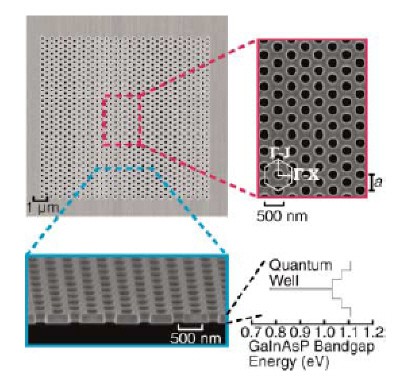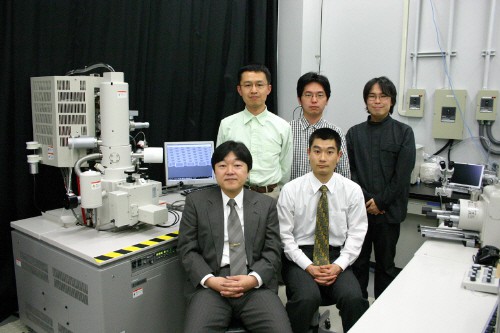Physicists in Japan have shown that they can manipulate the spontaneous emission of light in photonic crystals. The results could lead to improvements in the performance of light-emitting diodes, lasers and solar cells. Whereas the stimulated emission of light is the basis of laser operation, spontaneous emission tends to waste energy in optoelectronic devices. However, Susumu Noda and colleagues at Kyoto University have now found a way to both reduce spontaneous emission and extract it as useful light (Science 308 1296).

The Kyoto team embedded a light-emitting quantum well with a diameter of 5 nanometres in a 2D photonic crystal structure made from a gallium indium arsenide phosphide (GaInAsP) slab that contained tiny air holes arranged in a triangular lattice pattern (figure 1). The large contrast in the refractive index of the GaInAsP and the air holes meant that photons with a certain range of wavelengths – which is known as the “photonic band gap” – cannot travel through the crystal.
Noda and co-workers prepared a variety of samples in which the separation between the air holes varied between 350 to 500 nanometres, and then measured the amount of light emitted by the samples. They observed that when the emission spectrum of a sample lay inside the photonic band gap, the overall spontaneous emission rate was reduced by a factor of five. Moreover, some of the photons were emitted in the direction vertical to the crystal, where there is not a band gap. The overall result was that the light-emitting efficiency of the device increased.
“Spontaneous emission is a fundamental bottleneck that limits the performance of devices in various fields including photonics, illumination, displays, solar cells and even quantum-information systems,” Noda told PhysicsWeb. “By showing that we can ‘inhibit’ and ‘redistribute’ spontaneous emission, it should be possible to improve the performance of semiconductor lasers, solar cells, LEDs and other optoelectronic devices.”




